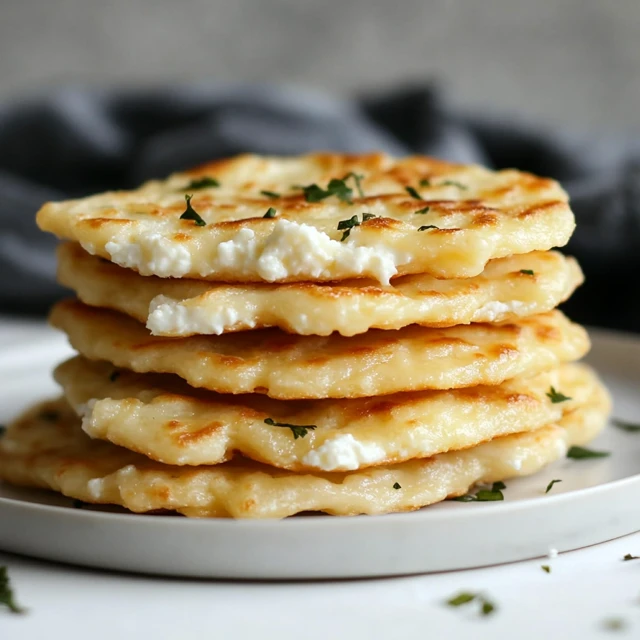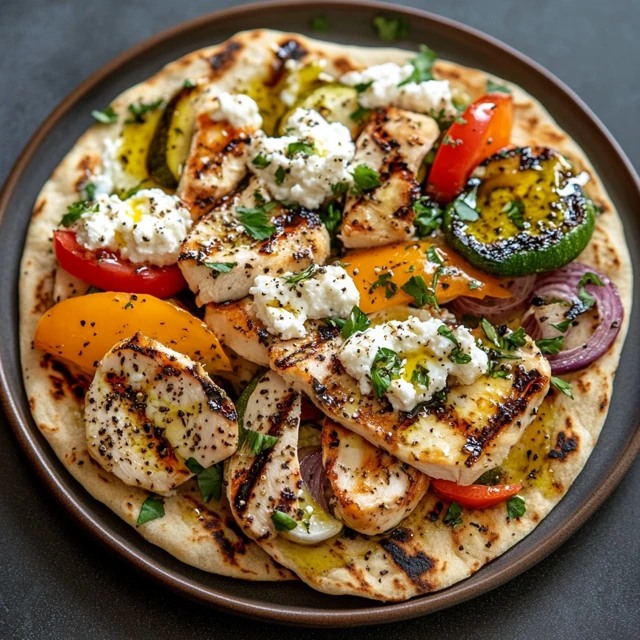Cottage cheese is a versatile ingredient that has found its way into a variety of recipes, including flatbreads. Its unique properties contribute to the texture, flavor, and nutritional profile of this simple yet delicious dish. In this article, we’ll explore what is the texture of cottage cheese flatbread and why it has become a favorite among home bakers and food enthusiasts.
Introduction to Cottage Cheese Flatbread

Cottage cheese flatbread is a modern take on traditional flatbreads, incorporating cottage cheese into the dough for a unique twist. It’s soft, flavorful, and packed with nutrients, making it an excellent choice for meals or snacks.
check out this step-by-step guide on making Cottage Cheese Flatbread.
What Makes Cottage Cheese a Unique Flatbread Ingredient?
Cottage cheese stands out as a flatbread ingredient due to its distinct characteristics:
- Moisture Content: Cottage cheese is rich in water, which helps create a dough that’s soft and pliable, resulting in a tender flatbread.
- Protein-Rich Composition: Its high protein content adds structure to the dough, ensuring the flatbread holds its shape while maintaining a chewy texture.
- Mild Tangy Flavor: Cottage cheese contributes a subtle tang to the dough, enhancing its flavor without overpowering it.
- Versatility: Whether blended for a smooth consistency or left slightly textured for added interest, cottage cheese adapts well to various flatbread recipes.
These qualities make cottage cheese a go-to ingredient for bakers seeking to create a flatbread that’s not only delicious but also unique in texture and taste.
Nutritional Benefits of Cottage Cheese in Flatbread
In addition to its functional role in the dough, cottage cheese brings several nutritional benefits to flatbread:
- High Protein Content: Cottage cheese is a great source of protein, which helps make the flatbread more filling and satisfying.
- Rich in Calcium: As a dairy product, cottage cheese provides calcium, which is essential for healthy bones and teeth.
- Low in Fat: Depending on the variety used, cottage cheese can reduce the fat content of the flatbread, making it a lighter alternative to traditional recipes that rely on butter or cream.
- Digestive Benefits: Its mild tanginess indicates the presence of beneficial lactic acid, which may support digestion.
These nutritional perks make cottage cheese flatbread a balanced choice for those looking to enjoy a wholesome yet indulgent meal.
Exploring the Texture of Cottage Cheese Flatbread
What makes cottage cheese flatbread so good is how it feels when you eat it. It’s both soft and chewy, with a light tangy taste that makes it even better.
Soft and Chewy Consistency
One of the defining traits of cottage cheese flatbread is its soft and chewy consistency. Unlike traditional flatbreads that can sometimes be dry or brittle, cottage cheese ensures a tender, pliable texture that holds up well to folding, topping, or dipping.
How Cottage Cheese Contributes to Moistness
Cottage cheese plays a crucial role in maintaining the flatbread’s moisture. Its high water content hydrates the dough, ensuring it doesn’t dry out during cooking. This results in a flatbread that stays soft and fresh for longer periods, even after cooling.
- Blended Cottage Cheese: When blended, cottage cheese integrates smoothly into the dough, creating a uniform texture that’s moist yet firm.
- Chunky Cottage Cheese: If left unblended, the curds add tiny pockets of moisture to the dough, giving the flatbread a more rustic feel.
This moistness not only enhances the texture but also makes the flatbread easier to pair with dry or dense toppings like grilled vegetables or meats.
Slight Tanginess in the Dough
The subtle tanginess of cottage cheese adds an unexpected layer of flavor to the flatbread. This tang is mild but noticeable, giving the bread a depth that elevates it beyond traditional flatbread recipes.
- Flavor Enhancement: The natural acidity of cottage cheese balances the richness of the dough, making it ideal for both sweet and savory toppings.
- Complementary Taste: The tanginess pairs well with ingredients like garlic, herbs, or even honey, offering versatility in how the flatbread can be served.
This slight tang sets cottage cheese flatbread apart, making it a flavorful choice for everything from appetizers to main dishes.
check out this step-by-step guide on making Cottage Cheese Flatbread.
Crispness When Cooked
Cottage cheese flatbread is celebrated not only for its soft and chewy texture but also for its ability to develop a slight crispness when cooked. This unique balance of softness and crunch makes it a versatile base for a wide variety of toppings and dishes.
Balancing Softness and Crunch
Achieving the perfect balance of softness and crunch in cottage cheese flatbread requires the right cooking technique and ingredient proportions. Here’s how it works:
- Moisture from Cottage Cheese: The high moisture content in cottage cheese ensures the flatbread retains its softness, even as the exterior crisps up during cooking. This balance creates a bread that’s tender inside but firm enough to hold toppings without breaking.
- Cooking Surface: Using a hot skillet, griddle, or oven allows the exterior to develop a golden-brown crust while preserving the inner softness. For extra crunch, brushing the surface with olive oil or butter before cooking can enhance the texture.
- Cooking Time: Overcooking can dry out the flatbread, so monitoring the cooking time ensures it remains soft in the center while achieving just the right amount of crispness on the edges.
This balance of textures makes cottage cheese flatbread a satisfying option for a variety of dishes.
Perfect for Versatile Toppings
Cottage cheese flatbread works well with many toppings because of how it’s made. The crispy outside helps hold wet or heavy toppings, while the soft inside makes each bite taste better. Here are some things you can put on top:
- Savory Toppings:
- Grilled vegetables like zucchini, bell peppers, and eggplant.
- Protein options such as shredded chicken, smoked salmon, or sautéed mushrooms.
- Cheeses like feta, mozzarella, or a sprinkle of Parmesan.
- Sweet Toppings:
- A drizzle of honey or maple syrup paired with fresh berries.
- Nut butter and banana slices for a hearty, nutritious option.
- Cinnamon-sugar with a dollop of whipped cream for a dessert-like treat.
This versatility makes cottage cheese flatbread suitable for breakfast, lunch, dinner, or even dessert.
How to Make Cottage Cheese Flatbread

Making cottage cheese flatbread at home is simple and rewarding. With just a few ingredients and some basic techniques, you can create a flatbread that’s both delicious and versatile.
Key Ingredients and Preparation Steps
Ingredients:
To make cottage cheese flatbread, you’ll need:
- 1 cup cottage cheese (blended or unblended, depending on your texture preference).
- 1½ cups all-purpose flour (or a combination of whole wheat and all-purpose flour for added nutrition).
- 1 teaspoon baking powder (to help the dough rise slightly).
- ½ teaspoon salt (for flavor).
- Optional: herbs (such as parsley or oregano) for a savory twist.
Preparation Steps:
- Mix the Dough: In a large mixing bowl, combine the flour, baking powder, and salt. Gradually add the cottage cheese and mix until a soft dough forms. If the dough is too sticky, add a small amount of flour.
- Knead the Dough: Transfer the dough to a floured surface and knead gently for 2-3 minutes until smooth. Avoid over-kneading to keep the flatbread tender.
- Divide and Shape: Divide the dough into equal portions and roll each into a ball. Flatten each ball into a round or oval shape, about ¼ inch thick.
- Cook the Flatbread: Heat a skillet or griddle over medium heat and lightly oil the surface. Cook each flatbread for 2-3 minutes on each side or until golden brown spots appear.
This straightforward process ensures a perfectly cooked flatbread with the ideal balance of softness and crispness.
check out this step-by-step guide on making Cottage Cheese Flatbread.
Tips for Achieving the Perfect Texture
To create the best cottage cheese flatbread, follow these expert tips:
- Blend for Smoothness: If you prefer a consistent texture, blend the cottage cheese before mixing it into the dough. This eliminates lumps and creates a smooth, pliable dough.
- Rest the Dough: Allow the dough to rest for 10-15 minutes before rolling it out. This helps relax the gluten, making the flatbread easier to shape and cook evenly.
- Control the Heat: Use medium heat for cooking. Too high a temperature may burn the exterior while leaving the center undercooked, while too low a temperature can result in a tough texture.
- Experiment with Flour Types: For a nuttier flavor and added nutrition, try substituting some of the all-purpose flour with whole wheat or almond flour.
- Season the Dough: Add herbs, spices, or even grated cheese to the dough for an extra layer of flavor.
By following these tips, you’ll consistently achieve flatbread with a perfect texture that’s both soft and slightly crispy.
Frequently Asked Questions
How would you describe the texture of cottage cheese?
Cottage cheese has a unique texture that is creamy yet slightly lumpy due to its curds. The size of the curds can vary depending on the type, ranging from small and delicate to large and chunky. It is soft and moist, with a mild, tangy flavor that complements both sweet and savory dishes. When blended, cottage cheese becomes smooth and creamy, making it versatile for recipes like flatbread, pancakes, or cheesecakes.
What is the texture of flatbread?
When you make flatbread with cottage cheese, it has a mix of textures. Inside, it stays soft and chewy because of the cottage cheese. When you cook it on a hot pan, the outside gets golden-brown spots that make it a bit crispy.
Cottage cheese flatbread strikes the perfect balance:
- Interior Texture: Soft, moist, and slightly chewy.
- Exterior Texture: Lightly crispy with a golden-brown crust.
This dual texture makes it suitable for folding, topping, or dipping into your favorite sauces.
How to know when cottage cheese flatbread is done?
To ensure your cottage cheese flatbread is perfectly cooked, look for these signs:
- Color: The surface should have golden-brown spots, indicating it has cooked evenly on the hot skillet or griddle.
- Texture: The flatbread should feel firm to the touch on the outside but still soft and pliable in the center.
- Sound: Tap the flatbread lightly—if it sounds slightly hollow, it’s cooked through.
- Cooking Time: Most flatbreads take 2-3 minutes per side on medium heat. Adjust the time based on the thickness of the dough.
Avoid overcooking, as this can make the flatbread too dry and lose its signature softness.
What is the consistency of cottage cheese?
Cottage cheese has a unique consistency that depends on whether it is blended or left in its natural form:
- Natural Form: Creamy and lumpy, with curds that provide texture. The curds are soft and slightly chewy, surrounded by a milky whey that adds moisture.
- Blended Form: When blended, cottage cheese becomes smooth and velvety, resembling cream cheese or ricotta. This consistency is ideal for recipes that require a uniform texture, like flatbreads or cheesecakes.
The choice between natural and blended cottage cheese depends on the desired texture of your recipe. For cottage cheese flatbread, either option works well depending on whether you prefer a rustic or smooth finish.
Conclusion: The Texture of Cottage Cheese Flatbread
Cottage cheese flatbread has a special mix of textures that makes it different from other flatbreads. Inside, it’s soft and chewy because the cottage cheese keeps it moist. When cooked right, the outside gets a little crispy with golden-brown spots, giving you both soft and crunchy bites.
Adding cottage cheese makes the bread feel nice and gives it a light tangy taste that goes well with both sweet and salty toppings. You can eat it with cooked veggies, honey and berries, or olive oil – it tastes good with lots of different foods.
You can make great flatbread by following easy steps, like blending the cottage cheese until smooth or cooking it longer if you want it crispier. This flatbread is easy to make, good for you, and has a special texture – making it worth trying for anyone who likes to cook or bake at home.
Cottage cheese flatbread is more than just bread – it’s soft and crispy, and tastes great all at once. Try making it in your kitchen and see how cottage cheese makes it special!

